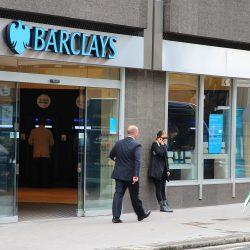S&P: Capital Strength Helps U.K. Banks To Weather Additional PPI Charges

In recent days, several U.K. banks have announced the range of additional Payment Protection Insurance (PPI) provisions which they expect to book when they announce their results for the period to Sept. 30, 2019. The early announcements relate to the increase in information requests that banks received ahead of the Aug. 29, 2019 complaints deadline, including an exceptional surge in the final days. As they have still to work through the large volume of requests, and the conversion rate to an upheld complaint may differ from historic experience, each bank has stated that the final provision could be higher or lower than the range published.
Against this backdrop, we have reviewed our capital assessments for each banking group. All else being equal, we do not anticipate any related ratings action, which is consistent with our opinion stated in our broader PPI deadline commentary on Aug. 30, 2019 (see attached).
Still, the likely final financial impact of PPI provisioning, in terms of banks’ full-year 2019 earnings, is more negative than we had previously assumed. Moreover, lower statutory earnings come at a time of U.K. political impasse, a domestic economy that has been showing signs of weakening, and industrywide pressure on net interest margins. The banks’ third-quarter provisions represent their best estimates of their remaining PPI costs, including settlements and administration costs. It will inevitably take time for banks to work through the backlog of complaints and we see potential for further provision adjustments in the fourth-quarter and into next year, albeit much less material than third-quarter amounts.
Capital is an important component of our ratings analysis, but it is only one of several key elements. There are currently no examples of capitalization being a credit negative for U.K. banks. While we expect this to remain the case, weaker capital ratios than we had previously assumed may not be able to mitigate a weakening in other rating factors, for example if we perceive a potential for a sharper-than-expected deterioration in the U.K. economy. We therefore assume that bank boards may now be less supportive of large shareholder distributions once banks announce year-end results.
For the affected U.K. banking groups, the following summarises our capital assessment, in relation to our risk-adjusted capital (RAC) ratio and based on banks’ announced expectations:
- Barclays PLC expects to increase its PPI provision by £1.2 billion-£1.6 billion in the third quarter. It now expects its common equity Tier 1 (CET1) ratio at year-end 2019 to meet management’s target of about 13%, which compares to 13.4% at June 30, 2019. We continue to project that Barclays’ RAC ratio will be in the 10.0%-10.5% range over the next 18-24 months.
- CYBG PLC expects to book an extra £300 million-£450 million in PPI provisions in the six months to Sept. 30, 2019 (a longer period than peers owing to its year-end being Sept. 30). As a result, we now expect CYBG to be loss making in full-year 2019. We revised down our assessment of CYBG’s capital and earnings assessment earlier this year (but at the same time affirmed its ratings), and stated in May 2019 that we assumed a RAC ratio of 9.5%-10.0% through to year-end 2021. The extra provision appears likely to reduce this projection down to around 9%.
- Lloyds Banking Group PLC expects to book an extra £1.2 billion-£1.8 billion in PPI provisions in the third quarter. At the same time, we note that the Board has decided to suspend the remainder of its 2019 share buyback program, with about £600 million of the program likely to be unused at mid-September. In absolute terms, Lloyds continues to be the U.K. bank most affected by PPI. We still expect Lloyds’ RAC ratio to be in the 7.5%-8.0% range through year-end 2021.
- Royal Bank of Scotland Group PLC expects to book an extra £600 million-£900 million in PPI provisions in the third quarter. While this range is higher than anticipated, it nevertheless reinforces why, among other reasons, we expect RBSG’s RAC ratio to be at the top of the 7%-10% range at end-2021. This ratio was 10.7% at Dec. 31, 2018.
At this time, HSBC Holdings PLC, Nationwide Building Society, and Santander UK Group Holdings PLC have not announced a PPI update. In each case, we don’t anticipate that any additional PPI provisions will affect our capital assessments.
In all cases, we don’t believe that additional PPI provisions will affect ratings uplift for the main operating banks, as a result of our assessment of additional loss-absorbing capacity (ALAC). This is despite the quantum of excess total adjusted capital (TAC) within the calculation of ALAC appearing likely to be reduced. We note that most banking groups have made further progress with ALAC-eligible issuance year-to-date.


